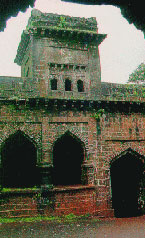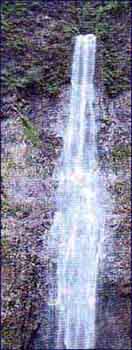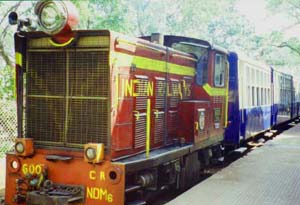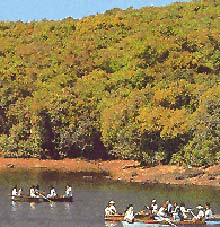| Destinations
|
|||
The third largest state both in size and in population, Maharashtra covers an areas of 307,690 sq.kms. and has a primarily Marathi speaking population of 62,784,171. The state is on the Western side of the Indian peninsula and has a long narrow coastal strip, almost 720 kms. in length. The Western Ghats run parallel to the cost while the rest of Maharashtra is a triangular plateau.
|
Maharashtra • Forts • Panhala • Aurangabad • Ajanta & Ellora • Ganapatipule • Karnala • Borivli
Travelogues • Rock Climbing • Trekking • Paragliding Leisure • Elephanta Caves • Nature Trail |
||
Maharashtra has some very pretty hill stations. Dotted along the Western Ghats, surrounded by lush green forests, they offer visitors the best of both worlds. The calm beauty of the great outdoors as well as the minor bustle of the small town. A pleasantly cool climate, easy accessibility and a developed infrastructure combine to make your stay a comfortable one. Lonavala-Khandala-Karla Khandala, is about 2 hours from Mumbai by road or rail. Its clean crisp air greets you, as you wind your way up the steep ghats, leaving the humidity, heat and dust behind. Both Lonavala and Khandala offer breathtaking views of cascading waterfalls during the monsoon, and the surrounding mountains of the plains spread out to the horizon far below. Karla-12 km. from Lonavala boasts of one of the best preserved caves dating back to 160 B.C. The excavation of this cave temple started during the Hinayana period of Buddhism. A short trek away from Karla are the Bhaja caves, excavated in the 2nd century B.C. The caves are set among green hills with a waterfall and a view of Lohagad and Visapur Forts at a distance. Karla and Bhaja are easily reached from Malavli station (on the Mumbai-Pune rail route) or by taxi and autorickshaw from Lonavala.
Season :October to May Matheran
Season :October to May
Elphinstone, Babbington, Mumbai, Kate's and numerous other points offer panoramic views of the plains below. A short distance away are waterfalls worth seeing-Chinaman's (2.5 km) Dhobi (3 km) and Lingamala (6 km). Venna Lake, the focal point of Mahabaleshwar has boating and fishing facilities. 24 Km. away is the historic Pratapgad Fort where the great battle between Maratha Chief Chhatrapati Shivaji and General Afzal Khan, the Commander-in-Chief of the Mughal emperor Aurangzeb, took place.
Season :October to June Panchgani It is a delight to walk through thickly wooded walkways (there are numerous stables in Panchgani) to explore the area, catching a glimpse of the River Krishna winding its way through the ravines, hundreds of metres below. Kamalgad Fort is easily reached by foot or on horseback.
Season :September to mid-June Jawhar
Season :September to May Amboli Quiet and isolated Amboli is perfect for those who really want to get away from the hustle and bustle of city life.
Season :September to May  Replete with the history of the Marathas, Panhala remains a testimony to its glorious past. Monuments have survived such as Sajja Kothi where Shivaji's Son Sambhaji was imprisoned and Ambabai Temple where Shivaji invoked divine blessings before every battle.
Replete with the history of the Marathas, Panhala remains a testimony to its glorious past. Monuments have survived such as Sajja Kothi where Shivaji's Son Sambhaji was imprisoned and Ambabai Temple where Shivaji invoked divine blessings before every battle.
Panhala is marvelously scenic, besides having a benign climate.
Season :October to May Rich with mythology, Chikaldara the only hill station in the Vidarbha region derives its name from Kichaka, who was killed by the mighty Bheema, (one of the Pandava bothers), for having dared to insult Draupadi. The valley initially called Kichak Bara, is now known as Chikaldara. Chikaldara is also famous for being the only coffee growing area in Maharashtra. Wildlife abounds here: Panthers, sloth bears, sambers and wild boar. The famous Melghat Tiger Project with a population of 82 tigers is located nearby. The triad of points Hurricane, Prospect and Devi offer commanding views of the Plains. Excursions can be made to Gavilgad Fort and Narnala Fort, Pandit Nehru Botanical Gardens, the Semadoh Lake and the Tribal Museum.
Season :October to June Information: Courtesy Government of India |
|||
Editor: Romola Butalia (c) India Travelogue. All rights reserved. |
|||
 The capital of Maharashtra, Mumbai (Bombay) provides a unique experience. The word `Mumbai' is derived from `Mumba Devi,' a local deity, but the Portuguese, predecessors of the British, preferred to think of it an `Bom Baim' or the `Good Bay'. Originally a set of seven marshy islands, Mumbai today is a reclamation story. The composite island is now a 22 km. long and 3 km. wide strip, into which are squeezed 9 million people and the country's busiest commercial and industrial establishments. Cosmopolitan in nature, Mumbai is a cultural melting pot where Parsis, Jews, Hindus, Muslims, Christians, all happily co-exist under a common designation-the `Mumbaiite'.
The capital of Maharashtra, Mumbai (Bombay) provides a unique experience. The word `Mumbai' is derived from `Mumba Devi,' a local deity, but the Portuguese, predecessors of the British, preferred to think of it an `Bom Baim' or the `Good Bay'. Originally a set of seven marshy islands, Mumbai today is a reclamation story. The composite island is now a 22 km. long and 3 km. wide strip, into which are squeezed 9 million people and the country's busiest commercial and industrial establishments. Cosmopolitan in nature, Mumbai is a cultural melting pot where Parsis, Jews, Hindus, Muslims, Christians, all happily co-exist under a common designation-the `Mumbaiite'.

 Situated along the Mumbai-Pune highway these three hill stations are just a hop away from each other.
Situated along the Mumbai-Pune highway these three hill stations are just a hop away from each other.
 This is one of the hill stations close to Mumbai (111 km). Travelling to Matheran by a tiny narrow-guage toy train from Neral (26 km. route) is an experience by itself. Taxis are available from Neral to Dastoori car park. No vehicles are allowed inside Matheran. One should not miss the majestic Panorama Point, Porcupine and Louise Points, Charlotte Lake with Panthers Caves and Paymaster Park which is of special interest to children.
This is one of the hill stations close to Mumbai (111 km). Travelling to Matheran by a tiny narrow-guage toy train from Neral (26 km. route) is an experience by itself. Taxis are available from Neral to Dastoori car park. No vehicles are allowed inside Matheran. One should not miss the majestic Panorama Point, Porcupine and Louise Points, Charlotte Lake with Panthers Caves and Paymaster Park which is of special interest to children.
 Mahabaleshwar, the summer capital of Mumbai Presidency during the days of the British, is a mountain top plateau often covered with a light morning mist.
Mahabaleshwar, the summer capital of Mumbai Presidency during the days of the British, is a mountain top plateau often covered with a light morning mist.